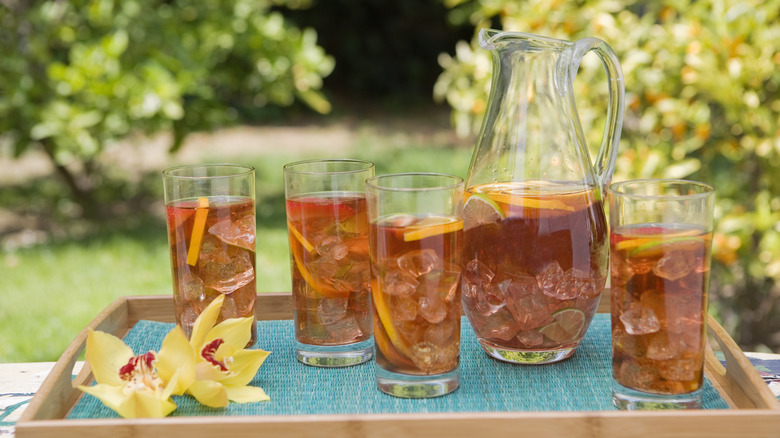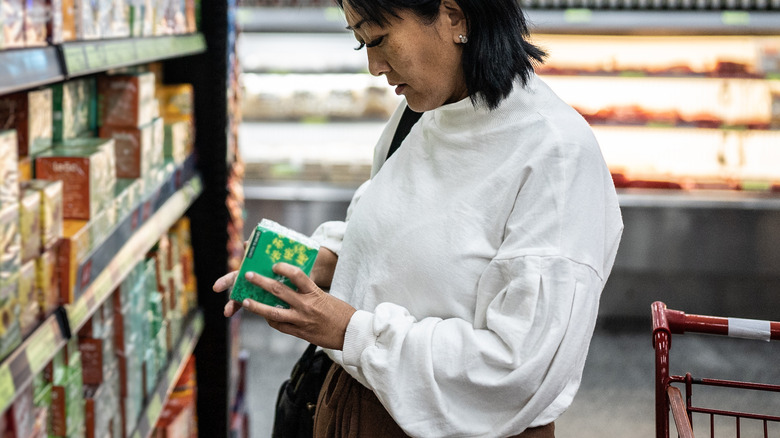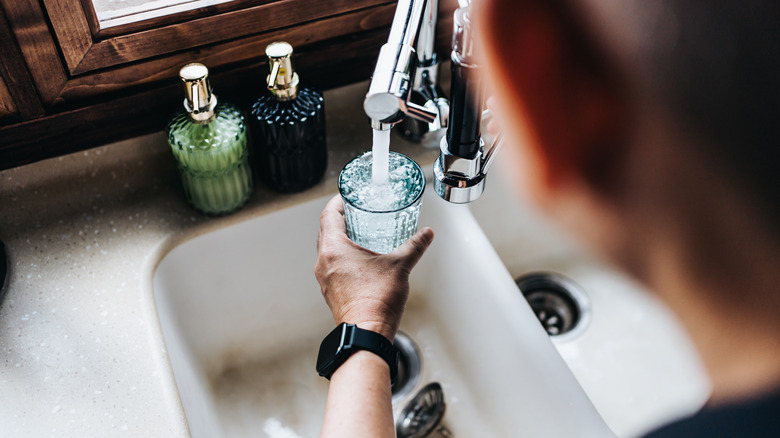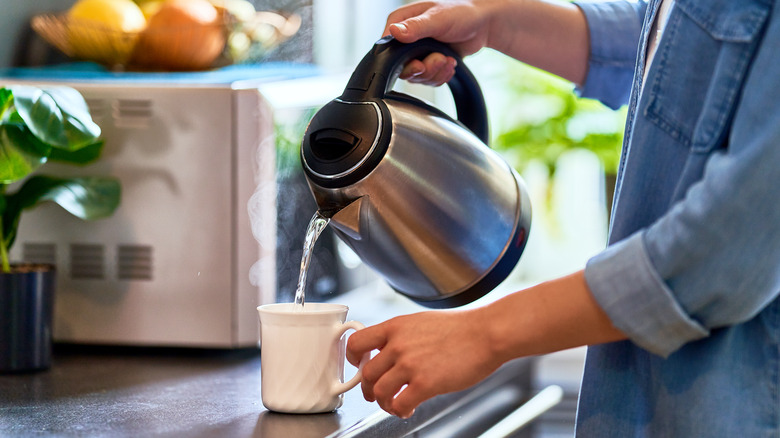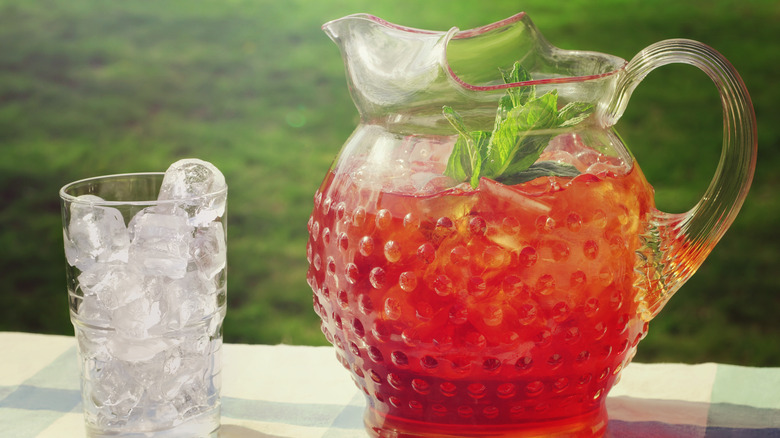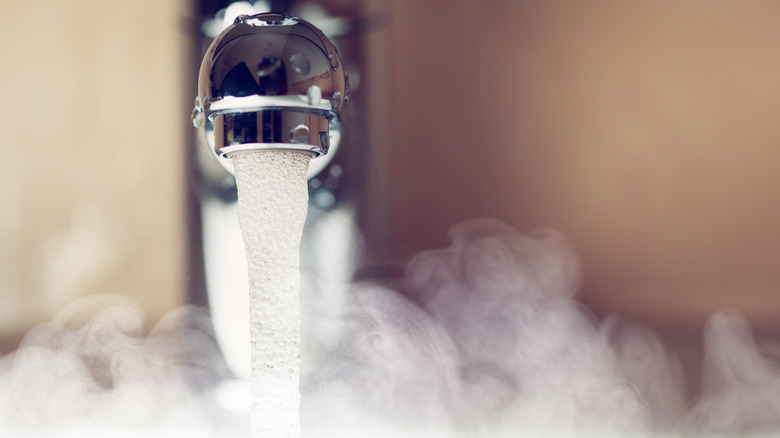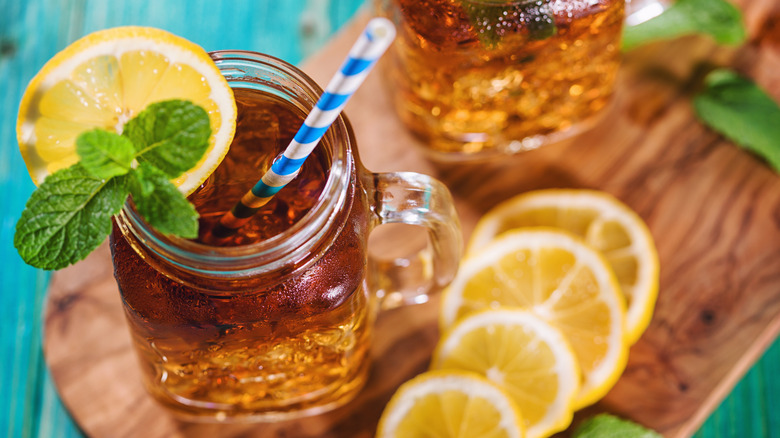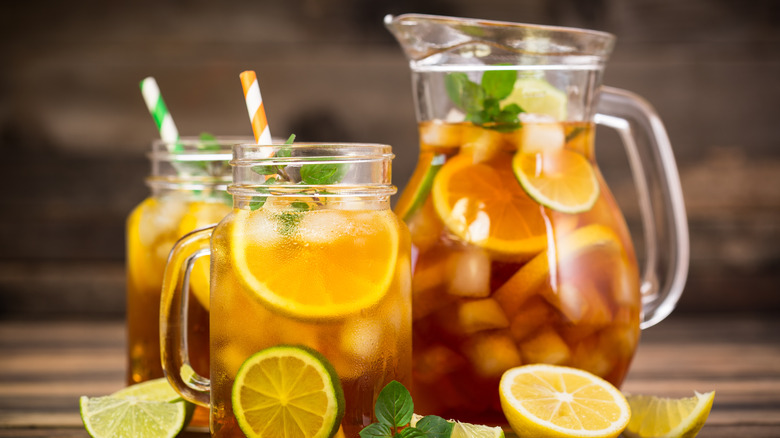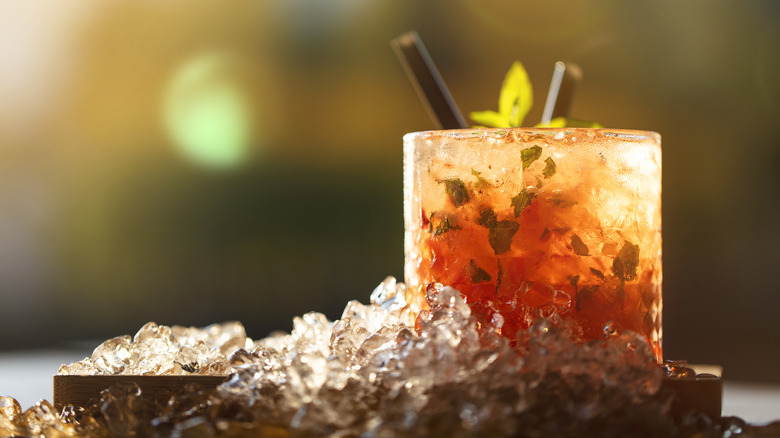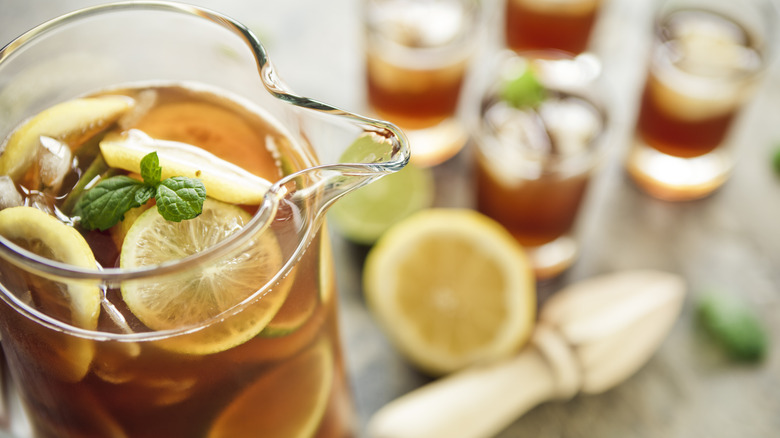10 Crucial Tips For Excellent Homemade Iced Tea
Fancy a cup of tea? Since its origin, tea will always be a popular beverage. But as the weather gets hotter, there's nothing like quenching your thirst with a revitalizing glass of homemade iced tea.
Believe it or not, there are so many ways to make iced tea. For example, selecting the right, high-quality tea leaves is important. Depending on your taste buds, you might opt for the robustness of black tea, the subtle elegance of green tea, the delicacy of white tea, or the herbal infusion of botanicals. Who doesn't love a cup of exotic Chai Tea or High Tea? It's also important to master the brewing process (boiling water can actually ruin your tea!)
If you've just gone mad with experimentation, we give you 10 crucial tips for excellent homemade iced tea. With this knowledge, everyone will praise your superior tea at all those summer barbecues or outdoor family dinners you're hosting! Delicious!
Use high-quality tea
Starting with high-quality loose-leaf, tea sets the foundation of a truly delightful beverage. The type of tea you select, whether black, green, or herbal, will greatly influence the flavor profile of your iced tea. According to Ringtons Tea, loose-leaf tea offers a superior taste to tea bags, as it contains whole, unbroken leaves that infuse fully and release their aromatic oils.
Not sure which flavor of tea to get? If you want tradition and a rich, malty flavor, try Black tea. Green tea, on the other hand, offers a lighter and more delicate taste with subtle grassy or vegetal undertones. Herbal teas, made from herbs and botanicals, have a wide range of flavors, from fruity to floral to spicy, allowing you to experiment.
By selecting high-quality tea, you ensure a satisfying sip of iced tea, whether you prefer a brisk and invigorating black tea, a soothing and aromatic green tea, or a blend of flavorful herbs.
Brew with fresh, cold water
When brewing a perfect cup of tea, water quality is just as important as the tea itself! Brew your tea with fresh, cold water to achieve the best flavor. This simple step makes a huge difference in the taste and enjoyment of your tea-drinking experience! Invest in a good-quality water filter or use a filtered water pitcher.
According to Live Science, tap water, while convenient, often contains impurities that affect the flavor of your tea. Chemicals like chlorine, commonly used to disinfect tap water, can leave an unpleasant aftertaste and interfere with the delicate flavors of your tea.
Instead, opt for fresh, cold, filtered water. Filtered water helps to remove impurities, such as chlorine, sediment, and any potential contaminants, for a cleaner and crisper tea. Filtering your water not only enhances the taste but also the overall quality of your tea, reducing the risk of any unwanted particles or residue.
Get the right tea-to-water ratio
The tea-to-water ratio must be just right to achieve the perfect balance of flavors in your tea! The ideal ratio ensures that the flavors of the tea are not too weak or overpowering, resulting in a well-rounded, enjoyable cup of tea. According to Arbor Teas, a general guideline for brewing loose-leaf tea or tea bags is to use 1 teaspoon of tea per cup (8 ounces) of water. However, you can adjust the quantity to suit your liking. One teaspoon of loose-leaf tea or one tea bag per cup of water is just a good starting point! This measurement allows the tea leaves or bag to infuse and release their flavors into the water fully.
The exact amount may vary depending on the size and density of the tea leaves or the type of tea bag being used. For example, larger, whole-leaf teas require slightly more tea leaves, while finer or broken leaves require less. Some teas, such as green or white, are more delicate and may require slightly less tea per cup to avoid overpowering the subtle flavors. On the other hand, robust teas, like black or herbal, may benefit from a slightly stronger brew, and you can adjust the ratio by adding a bit more tea for a bolder taste.
Ultimately, the tea-to-water ratio is up to you. You may prefer a stronger or milder cup of tea; experimentation will help you find the perfect balance!
Steep for the right duration
Steeping time is important in achieving the perfect cup of tea, and it varies depending on the type of tea you are brewing. Steeping duration impacts the tea's taste, aroma, and overall quality.
According to Artful Tea, Black tea generally requires three to five minutes of steeping. This allows the tea leaves to infuse and release their flavors fully. But be careful not to steep for too long, causing bitterness. Green tea is more delicate and should be steeped for a shorter duration of two to three minutes. Green tea leaves are usually unoxidized, and a shorter steeping time helps to preserve their freshness and delicate flavors.
Herbal teas require a longer steeping time of five to seven minutes, allowing the herbal ingredients to infuse into the water fully. According to Harvard School of Public Health, unlike true teas derived from the Camellia sinensis plant, herbal teas are naturally caffeine-free and offer many health benefits. Following the recommended steeping times, you'll have a well-balanced and enjoyable cup of tea every time! These guidelines are general recommendations, and personal preferences may vary. Adjusting the steeping time will help you tailor the strength and flavor of the tea to your liking.
Control water temperature
When you steep your tea, it greatly influences its flavor. Each type of tea has its optimal water temperature, ensuring that the desired qualities are extracted without compromising the tea's integrity.
Healthline recommends using hot water for black tea, around 195 degrees Fahrenheit, for three to four minutes. The high temperature helps to extract the rich aromas from the black tea leaves. Whereas, green tea is more delicate and requires slightly cooler water, typically around 175 degrees Fahrenheit, or three to four minutes. Using too hot water can lead to the extraction of bitter compounds, diminishing green tea's subtle nuances and refreshing qualities. Steeping green tea at a lower temperature allows the flavors to develop harmoniously, creating a smoother cup.
When it comes to herbal teas encompassing a wide range of ingredients, including herbs, flowers, and fruits, boiling water is usually recommended. The higher temperature aids in extracting the medicinal and aromatic properties of the herbal ingredients. Herbal teas often require a longer steeping time as well. By being mindful of water temperature and adjusting it accordingly, you'll have an enhanced tea-drinking experience.
Sweeten while hot
Sweetening your tea while it's hot ensures that the sweetener dissolves effectively and evenly. According to Ozmo, the hot tea's high temperature helps dissolve sugar or honey more rapidly than in cold liquid. When you add sweeteners to hot tea, the heat helps to break down the sugar crystals or liquefy the honey, allowing them to blend effortlessly into the beverage, with no undissolved sugar granules or clumps of honey settling at the bottom of your glass. By dissolving the sweeteners while the tea is hot, you won't have pockets of sweetness or inconsistent flavor in your iced tea.
Adding sweeteners to hot tea also allows for easier customization. You can easily adjust the sweetness level by gradually adding and tasting the tea until it reaches your desired sweetness. This is particularly helpful if you prefer your iced tea to be lightly sweetened or have specific dietary requirements that call for a reduced sweetener!
What to sweeten your iced tea with besides basic sugar, syrup, stevia, or vanilla? Try fresh fruit! Invigorating options include strawberries, mango slices, kiwi, etc. You can even Save Pineapple Crowns For The Ultimate Tropical Summer Tea!
Let it cool
After steeping your tea, cool it to room temperature before refrigerating it. According to Plum Deluxe, allowing the tea to cool naturally at room temperature before refrigerating helps prevent cloudiness. The cloudiness is caused by a process called "chill haze," which occurs when tea molecules precipitate and form visible particles in response to rapid temperature changes. These particles can affect the taste of your tea. Allowing the tea to cool gradually to room temperature gives the molecules time to stabilize, reducing the likelihood of cloudiness. Once the tea has reached room temperature, transfer it to the refrigerator for further cooling.
Cooling your tea before refrigeration also helps preserve the delicate flavors and aromas. Rapid cooling leads to flavor loss or changes in taste, while allowing the tea to cool naturally ensures that the flavors are better retained. We know it's hard because the summer thirst is real, but patience will pay off! This simple step will enhance your tea-drinking experience and allow you to fully appreciate the nuances and subtleties of your favorite brew.
Don't dilute with ice
When enjoying a refreshing glass of iced tea, people make one common mistake: diluting it with ice! While cooling down a hot beverage quickly seems convenient, pouring hot tea directly over ice can dilute its flavor and leave you with a weaker drink. So chilling the tea in the refrigerator before serving it over ice is key! You preserve its flavor and integrity by allowing the tea to cool naturally. Once the tea is chilled, pour it over-generous ice cubes into your glass.
Chilling the tea in the refrigerator also allows the flavors to meld and develop further. Refrigerating the tea ensures that it maintains its freshness for longer periods, so you can enjoy it at your own pace without worrying about it becoming stale or losing appeal.
So, the next time you're craving a glass of iced tea, resist the temptation to pour hot tea directly over ice! Take the extra step of chilling it in the refrigerator, and you'll be rewarded with a flavorful and satisfying drink that quenches your thirst and refreshes your mood. The little details make a big difference!
Serve it fresh
Freshness is key to a delicious glass of iced tea. While it is tempting to prepare a large batch of iced tea to save time and effort, the flavor and quality of the tea are best when it's freshly made. Making a smaller batch of iced tea controls the brewing process and maintains the optimal balance of flavors. You can adjust the strength and sweetness according to your preference.
However, if you need to store leftover iced tea, do so properly to preserve its freshness. The best way to store iced tea is to transfer it to an airtight container and place it in the refrigerator. This helps maintain its flavor and prevent unwanted odors or tastes from seeping in. Properly refrigerated, iced tea can usually keep its quality for two to three days. While iced tea may still be safe to consume beyond this timeframe, its flavor and quality may begin to deteriorate. The tea can lose its freshness, become stale, or develop a slightly different taste as time passes. So consume the stored iced tea within a few days for the best experience!
Avoid plastic taste
When it comes to homemade iced tea, the choice of container can impact the taste of your tea. Plastic pitchers or containers, particularly those of lower quality, may introduce an undesirable plastic taste to the tea. Opt for glass or stainless steel pitchers for a cleaner flavor. Glass pitchers have always been a popular choice for preserving the taste of iced tea. And because glass is transparent, you see the vibrant color and clarity of the tea!
Stainless steel pitchers are another classic option because they can better retain the tea's cold temperature for longer periods than if stored in plastic. If you must use plastic containers, however, choose high-quality, food-grade plastics designed for beverages. These plastics are safer and less likely to impart noticeable taste or odors. But the risk of potential flavor transfer remains even with these plastics. Pykal discusses the different materials used in pitchers and their impact on taste. It explores the advantages of glass, stainless steel, and plastic — and supports that glass and stainless steel are superior choices for avoiding plastic taste in your iced tea.

